-
Posts
433 -
Joined
-
Last visited
-
Days Won
3
Content Type
Profiles
Forums
Resource Library
Events
Gallery
Blogs
Store
Community Map
Posts posted by Lambeg man
-
-
-
On 18/1/2022 at 5:39 PM, Noel said:
It looks like most of us may end up driving battery electric cars within the next 5-7 years if the SIMI stats are anything to go by.
Sorry, are we not back to the pro's and con's of the Drumm Railcar batteries??? I love the line in Baker's "Irish Railways Since 1916" book about how he was reading up a historic newspaper article in the main Dublin library about the Drumm Railcars and someone leant over his shoulder and said something along the lines of "The Oil companies screwed that".
-
 2
2
-
-
Unfortunately I have no photographs of me as a youngster near a train. As a family we used the Lambeg to Belfast service often to visit 'Nannie Murphy'. The same 'Nannie Murphy' had the laurel bushes deemed redundant from the bank behind the down platform at Lambeg circa 1960 courtesy of the 'Station Master' Mr. McIntyre (he was actually graded as a 'Platform Foreman'). She carted the bushes up to Woodland Gardens underneath my younger brother's pram and set them at the front boundary wall, where they still are today. The first photo I have of me near a train was taken in 1979 when I was stationed at the British Army Railway Squadron in what was then West Germany. As I was then aged 24, I don't think that counts in terms of this thread???
-
 1
1
-
-
Help Request
Would any member of this site be able to advise if ANY of the ex-GNR carriages that came into the ownership of the RPSI in the 1970s, had ‘steel’ body panelling? If so, was there anything underneath the steel panelling such as ‘Masonite’ (a form of compressed wood perhaps similar to modern MDF) panels? Or indeed did some of the ex-GNR carriages still have purely ‘Masonite’ body panels? The GNR used steel panels from 1935 until 1938. By 1939, as an economy measure, new carriages were built with ‘Masonite’ body panelling.
The reason behind the question is that the UTA for their part did a fair bit of fiddling around with some ex-GNR coaches, such as fitting curved window frame corners in place of the GNR practice of squared window corners, removing wooden panelling, etc. I am therefore exploring the possibility they may have re-panelled some carriages.
Any information would be gratefully received via my e-mail address - many thanks in anticipation of your assistance.
Steve Rafferty -
Yum yum, Living where I do I like the 'NORFOLK' connection - 'Fitzalan' (Norman origin) and Howard are the the family names of the Duke of Norfolk... Who lives in Arundel Castle in West Sussex... At least Tony Blair removed his voting right in the House of Lords!!! Mister Herbert Fitzalan Howard must have a sprog from under the stairs... LM
-
 1
1
-
-
13 hours ago, Irishswissernie said:
Coach C90N at Clara on IRRS Spl 18March1963
Built in 1931 by the GNR and classified G 6 (Brake/First/Second). This view is of the side corridor side with the Brake compartment furthermost from the camera.
Where coaches classified G had by 1931 been intended for either main line work or as part of branch services ‘Slipped’ on occasions from main line trains, this series of Brake/1st/2nd vehicles (3 in total) were produced for suburban services. They had a side corridor layout with a Driving/Brake compartment at one end. Recorded in 1936 as seating 12 – 1st class in the two compartments away from the Brake end and 40 – 2nd class in the remainder, it is to be noted that all seven compartments were built 7' 0" between the partitions. Although like some main line stock, each compartment had an exterior access door and a sliding door access to the side corridor, there was unusually also a matching door to each compartment on the exterior of the side corridor.
They were built to act as one half of the two-coach ‘Push-Pull’ sets which were operating on the Dublin-Howth services in the 1930’s. The 3rd class accommodation was provided by a classification L 11 (Brake/Third). The locomotive ran between the two coaches and the coaches were equipped with sanding gear and ‘Klaxon’ horns. Small high level windows were fitted into the driving end of the coach. No toilets were provided and the ‘Push-Pull’ operation of these trains was discontinued in the early 1940’s. After this the windows in the former Driving compartment (now a solely a Brake compartment) were boarded over and at some stage after 1944 (possibly January 1951) they were re-classed as Brake/1st seating 42 and with one exception, armrests were fitted to the former 2nd class seats. In his original Journal article, Norman McAdams stated that these three carriages, along with two classification F 2’s (First/Second) provided the 1st class accommodation on almost all locomotive hauled trains from Dublin in the latter days of the GNR (and into 1959).
C90N was altered to a Brake/Second in April 1965 and withdrawn from service in January 1967.
-
 2
2
-
 2
2
-
-
On 17/2/2022 at 1:39 PM, WRENNEIRE said:
Christian Brothers in Cabra didnt teach Twitter or Instagram, now if anyone wants to talk in Latin.........
I spent five years learning Latin at St. Malachys College in Belfast... I subsequently then never then met anyone who understood me, so after ten years I reverted to speaking English... I then visited my local hospital today and realized I should have studied Dutch... The Double version!!!
-
 4
4
-
-
On 17/2/2022 at 10:53 AM, Georgeconna said:
I'll leave that to you young lads...No idea what ya on about

Me neither... LM
-
 1
1
-
-
On 11/2/2022 at 7:54 AM, minister_for_hardship said:
The second photo is of Loo Bridge, the building is still there, it was a youth hostel for a while.
I seem to recall it was on the market a couple of years back... No idea who bought it...
On 15/2/2022 at 8:43 AM, Irishswissernie said:On the same date a view from the train at the east end of Cork station approach lines.
Would I be correct in saying that the photographer is in an AEC Railcar set with a Bullied intermediate? Answers on a postcard please!
-
7 hours ago, Bob229 said:
The superb A class raised the standard to another level, fantastic achievement for a Irish company against the established companies, Congrats and well done
Totally agree. One slight downside is that the perfection of my new 'A' class makes all my bodge jobs look naff! One delight however is showing visitors the fire extinguishers in the cab...
Well done to the whole team. LM
-
 3
3
-
-
On 9/2/2022 at 1:05 PM, jhb171achill said:
Hope this is of use to someone somewhere!
Well done JHB. A very interesting input. More power to your elbow.....
-
 2
2
-
-
2 hours ago, jhb171achill said:
Many of the “notes” made by folks like this need to be written up in the form of articles, sometimes even with the most eminent and highly respected authors, having errors or potentially misleading information corrected. This all takes a lot of time, and like preservation schemes, there’s only so many volunteers…..
As you say JHB, volunteers are thin on the ground or have been unable to visit Dublin. In respect of someone's personal notes, I was passed some of 'Mac' Arnold's material and that took a bit of deciphering. In respect of the IRRS staff, I think Mr. Cooney has done a sterling job posting up all the photographs that he has done in recent months.
-
 2
2
-
 1
1
-
-
On 11/1/2022 at 5:29 PM, Lambeg man said:
It shows an unusual formation of two CIE owned AEC power cars in different liveries, apparently towing a K 15 intermediate still in GNR Railcar livery and either a C 2 or F 16 carriage in CIE green livery.
Having written the above I then remembered the Dewing photo on the last page of "GNR(I) in Colour" showing a 2-car AEC set towing a non-Railcar fitted Brake/2nd. Then I also remembered I had this...
CIE c604n entereing Drogheda. No date given (but post 1961) and of interest in that this also is a two-car AEC set (both power cars) towing two wooden panelled carriages. Was CIE short of ex-GNR AEC Railcar intermediates in this period? Photographer unknown, copyright the Belncowe collection.
-
 5
5
-
 1
1
-
-
14 hours ago, Galteemore said:
I think this is probably the one my dad started up in Portadown roundhouse one day…..

GNR No. 8178 inside Portadown shed. Anyone know who the individual might be? Photo by the Rev. John Parker undated.
-
 4
4
-
 1
1
-
-
1 hour ago, jhb171achill said:
he said that's why there was a "prop" against it, as far as I remember.
The puncture would have been in one of the rear wheels as the front ones were solid. As JHB has remarked, in the absence of an effective brake, the "prop" would have been placed to prevent it rolling down the prevailing gradient on that siding.
-
 2
2
-
-
1 hour ago, jhb171achill said:
8178 sat down one time at Goraghwood and was shoved in a siding there until the Warrenpoint line closed and then taken to Witham Street,
Hi JHB,
The reason 8178 sat at Goraghwood through most of 1963 was because it had burst a tyre. I read somewhere that the UTA managed to locate a spare in Dundalk and repaired it. It was photographed several times in 1964 lying in Grosvenor Road depot, though not apparently in use. - LM
-
 1
1
-
-
On 4/1/2022 at 8:28 PM, jhb171achill said:
Three GNR coaches at Amiens St., 1963/4.
For modellers, this triple-liveried pic also shows clearly GNR 3rd class upholstery.
I honestly have no idea where I got this picture from. Apologies for any copyright breach. I have no idea who took it, the date, etc.
However I have posted it for the modeller's interest. It shows an unusual formation of two CIE owned AEC power cars in different liveries, apparently towing a K 15 intermediate still in GNR Railcar livery and either a C 2 or F 16 carriage in CIE green livery.

-
 4
4
-
 1
1
-
-
On 16/12/2019 at 7:35 PM, Irishswissernie said:
GNR Leyland Railbus No 2 at Inchicore 23 October 1960.
Sorry to go back over old ground, but I recently bought the "GNR(I) Road Motor Services 1925-1958" book by Sam Simpson. To my surprise and delight the book covers Railbuses as well road vehicles. In the colour section at the rear of the book is a photograph from the Geoff Lumb collection of the Railbus which featured in the GT Robinson photo posted by our host in 2019. The Lumb picture was taken from the other side of the vehicle. It shows it in same overall state of 'distress', but that the other side had the 'new' aluminium skin plates only partially fitted over the original GNR(I) bodywork. The caption states that CIE were in the process of converting No. 2 to a PW Department vehicle. Why CIE was undertaking this exercise with such an elderly vehicle at the time is still of course a mystery. I would doubt the exercise was ever completed, unless of course anyone knows differently? The 'new' photo is not dated specifically, but the book caption agrees that the Railbus is ex-GNR No. 2.
Just to complete the story, here is a photo by Ron Herbert, taken on 22nd October 1961 at Inchicore. It shows the other ex-GNR Railbus that went to CIE, clearly withdrawn from service.

-
 2
2
-
-
On 5/1/2022 at 9:32 AM, airfixfan said:
Finally if you are interested in details of GNR coaches there was an excellent booklet by Steve Rafferty for the IRRS some years ago
I thank you for the compliment Airixfan. However, just to set the record straight, it was done for the benefit of the RPSI!
Robin Lynsley, Michael McMahon, Charles Friel and Norman Johnston deserved to be credited for the production. It was no great licks (e.g. no photographs) as it was purely a re-print of the GNR(I) Coaching Classification Book of 1944 with later additions mentioned. There were so many errors that a 2 page correction sheet was later offered to anyone who had bought the booklet.
Material collected at the time and since has provided me with enough information for a production of a proper book entitled "GNR(I) Coaching Stock 1916-1976".
However a primary problem was that the first draft ran to 660 pages. Secondly there are copyright issues over some of the photographs and drawings I would propose to use.
To that end, the work remains for the time being suspended. If any member of this site is seeking ANY information about GNR Coaching Stock, please do not hesitate to contact me at:
stephenrafferty@hotmail.co.uk
or if you prefer by PM on this website.
On 4/1/2022 at 9:09 PM, murphaph said:Can someone explain to a clueless individual how the GNR coaches ended up in three liveries? Just a delay in repainting them after CIE got their share or is 135 UTA property or something?
135 was built in 1942 as a classification K 23 'Utility' (or Workmans') Coach. It was rebuilt in August 1945 as a K 15 open Third. In June 1958 it was fitted for operation with BUT Railcars, hence the GNR blue/cream livery it is seen wearing in the photograph. Allocated to CIE, it was withdrawn in July 1972.
The whole saga of former GNR(B) liveries post 1958 is a story in itself. Yes, GNR coaching stock allocated to CIE did drift gradually to Galway, Cork, Loughrea, etc. Between 1958 and 1964 CIE stock in both 'green' and 'black and orange' liveries made it to Warrenpoint, Bangor, Portrush and Derry/Londonderry (Foyle Road).
As regards ex-GNR Railcars, the UTA did not begin repainting them into UTA 'green' livery until 1960. The first ex-GNR hauled carriage to be repainted by the UTA was photographed in June 1959. However some carriages in GNR 'mahogany' livery continued to be in regular service as late as August 1963.
On 5/1/2022 at 12:56 AM, jhb171achill said:no wooden panelled GNR coaches ever got the blue and cream livery except No. 50, the Director's Saloon.
Steel paneled carriages were first produced by the GNR(I) in 1935. From 1939 and in all years up to 1954, all GNR carriages were built with 'Masonite' body panelling. 'Masonite' was a form of compressed wood (like modern MDF) and much cheaper than steel. The switch was not as frequently quoted by some commentators as "a war time economy", it was because in early 1939 the GNR(I) was already on it'd knees...
-
 1
1
-
 1
1
-
-
23 hours ago, StevieB said:
The railcar photo is quite a delight. The two railcars are from the 700 and 900 series but what is the intermediate coach?
The intermediate is a Brake/Second trailer with a train heating boiler in the Guard's van area. It is probably number c114n which was still in GNR 'Railcar' livery in July 1961. John Langford photographed the same set at Macmine Junction travelling in the 'down' direction on 9/6/1962.
-
 1
1
-
-

Hi Ernie, sorry to hear you have been unwell. Love the latest posting, in particular the above. I've never seen a photo of Amiens Street taken from position. Certainly was not aware of how straight the road in front of the shed ran. Excellent modelling information. Thank you.
-
 1
1
-
 1
1
-
-
41 minutes ago, jhb171achill said:
I believe the cover photo shows double-headed ones in UTA green pulling an Asahi into Carndonagh in 1949?
And I would presume the picture will have been taken with a telephoto lens showing Derry/Londonderry Guild Hall immediately behind the station building!!!!!
-
 1
1
-
-
On 22/11/2021 at 7:59 AM, Irishswissernie said:
GNRI 1959-07-03 Portadown 102 ex C3
Wow Ernie, never knew this railcar ever turned a wheel in UTA service, but clearly it did! Interestingly it appears the body was not daubed with a 'U T' stencil the way everything else was, but has 'U T' signs in the front windows. Fascinating photograph. Many thanks for posting. LM
-
 2
2
-
-
On 13/11/2021 at 8:37 PM, Galteemore said:
Yes, looks a bit like a Y5 van
While it is certainly ex-GNR, I think it may be a 'Y 4' as CIE did not get any 'Y 5' or 'Y 6'.
-
 1
1
-
 1
1
-
.png.c363cdf5c3fb7955cd92a55eb6dbbae0.png)
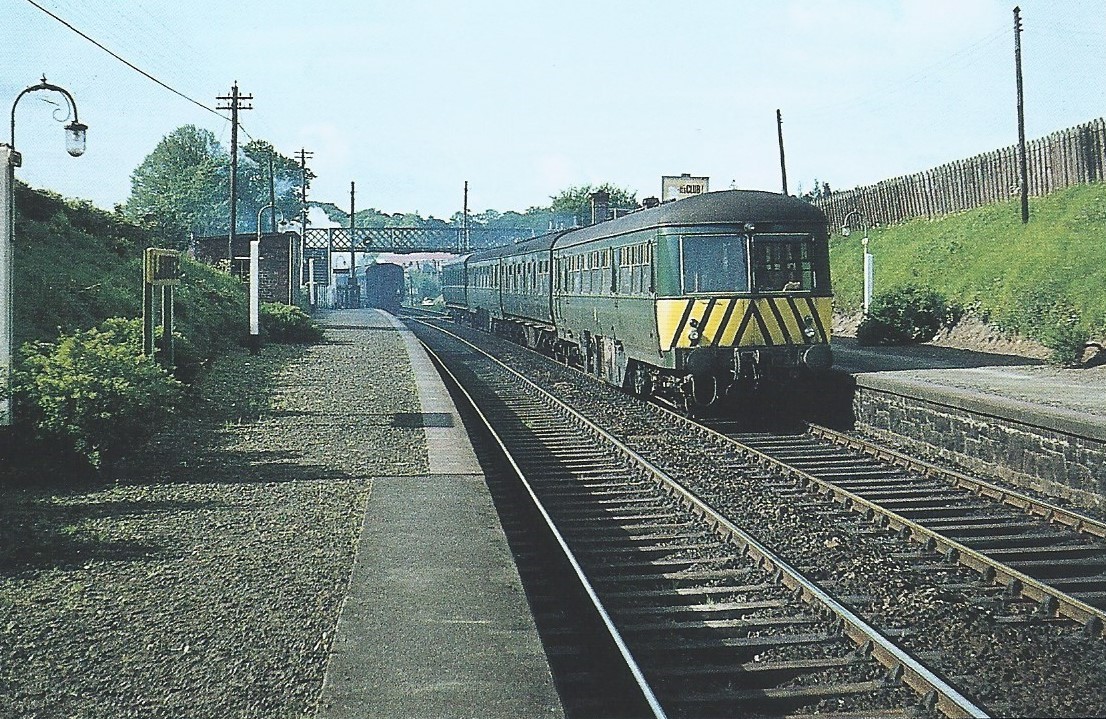
.thumb.jpg.619b7e43fcb01ddf7c110aacc1ea31d3.jpg)
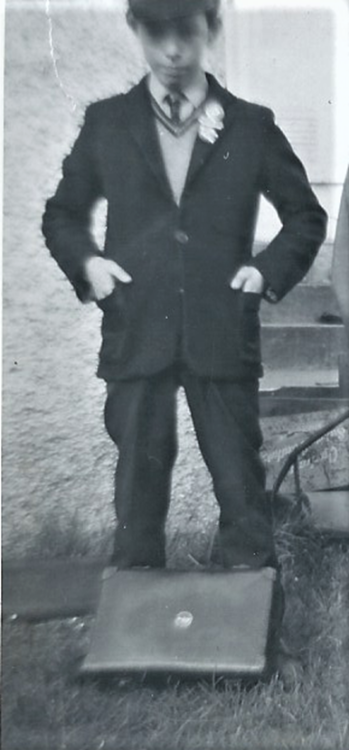
.thumb.jpg.01b39b69895dd24b60469d8fa9ad7ff3.jpg)
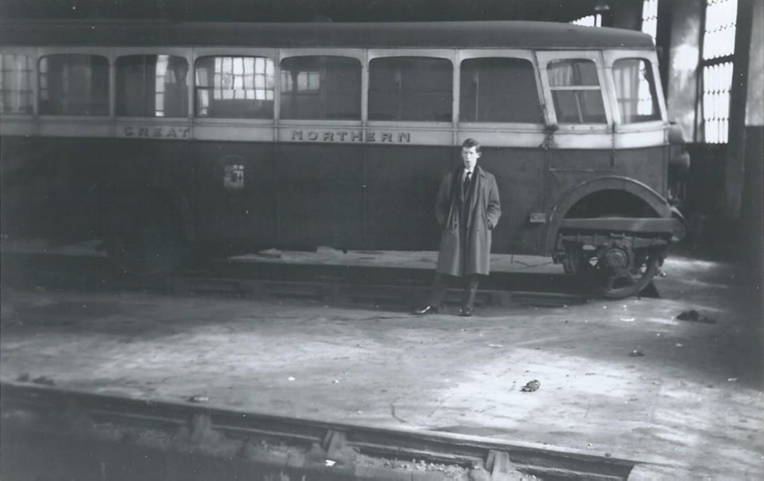
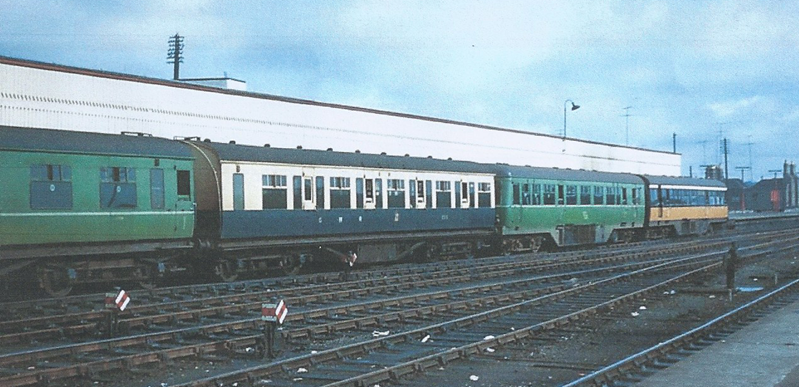
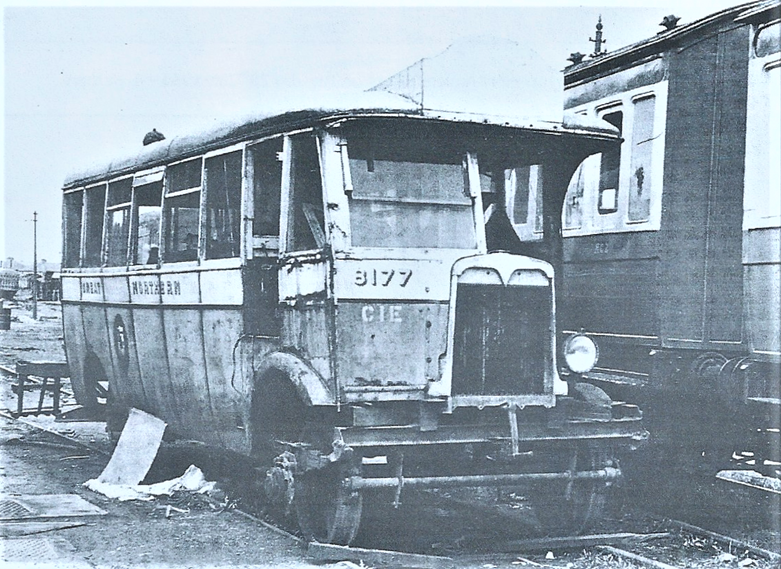

Where did it all begin? Earliest Photos of you Railway related.
in Letting off Steam
Posted
Initial point of order Galteemore, the RAF never ran trains. Trains were always the prerogative of the Army. Train operations at RAF Wildenrath circa 1978 were under the control of 79 Railway Squadron RCT based at Monchen-Gladbach. More to follow. May have to start a separate thread. LM
William McIntyre. He lived in the cottage at the south end of the down platform at Lambeg. I think he left around 1964/65. Do you remember anything else about him JHB? Do you know where he hailed from? He and my nannie were good friends.